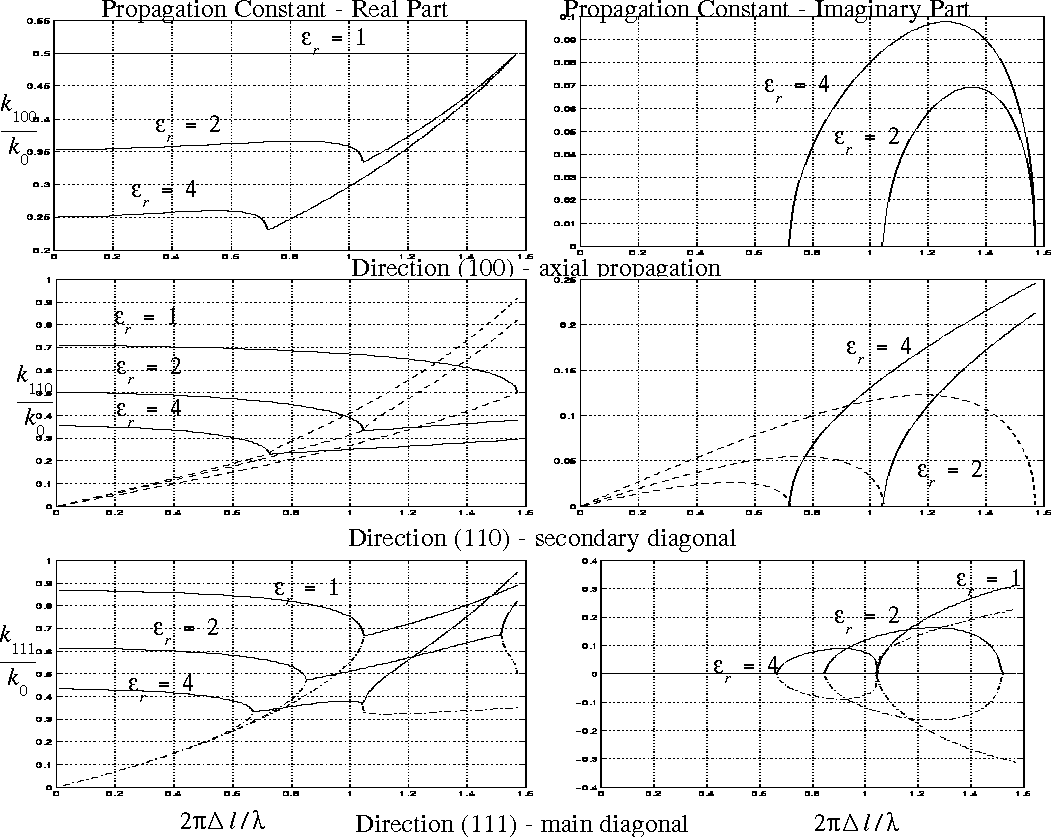The study of the numerical dispersion effects in discretization schemes is very important for time- domain simulation of Maxwell's equations. The generalized dispersion analysis of 2D and 3D TLM for mulations was presented in 1993, by Nielsen and Hoefer. However, only recently, closed-form solutions for the 3-D SCN TLM have been obtained.
We have performed a comparative dispersion analysis of the inhomogeneous 2-D and 3-D SC nodes using state-variable and stub-loaded models. Both analyses were performed with matrix-order reduction using frequency-domain techniques. The use of the state-variable model is more flexible than the stub-loaded approach and yields identical results for the approximate trapezoidal discretization scheme.
The results are presented in Fig.1.
Further details can be found in:
J.S. Nielsen and W.J.R Hoefer, `Generalized dispersion analysis and spurious modes of 2-D and 3-D TLM formulations', IEEE Trans. on Microwave Theory and Techniques, vol. 41, pp-1375-1384, Aug. 1993.
M. Krumpholz and P. Russer, `On the dispersion of TLM and FDTD', IEEE Trans. on Microwave Theory and Techniques, vol. 42, pp. 1275-1279, Jul. 1994.
M. Celuch-Marcysiak and W.K Gwarek, `On the effect of bilateral dispersion in inhomogeneous symmetrical condensed node modelling', IEEE Trans. on Microwave Theory and Techniques., vol. 42, pp. 1069-1073, Jun. 1994.
V. Trenkic, T.M. Benson and C. Christopoulos, `Dispersion analysis of a TLM mesh using a new scattering matrix formulation', to be published on IEEE Microwave and Guided Wave Letters in Mar. 1995.
P. Naylor and R. Ait-Sadi, `Simple method for determining 3-D TLM nodal scattering in nonscalar problems', Electronic Letters, vol. 28, pp. 2353-2354, Dec. 3, 1992

Fig. 1 - Dispersion results for the 3D SCN TLM. Solid lines: lossless propagating modes, dashed lines: lossy modes, dash-dotted lines: spurious mode